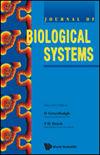用数学模型模拟乐伐替尼和PEMBROLIZUMAB对碘131I难治性甲状腺癌的影响
IF 1.5
4区 数学
Q3 BIOLOGY
引用次数: 0
摘要
免疫治疗和靶向治疗是分化型甲状腺癌症(DTC)的替代治疗方法,通常通过手术和放射性碘进行治疗。然而,在晚期甲状腺癌中,分子改变可导致碘敏感性的逐渐丧失,从而使癌症对放射性碘难治性(RAIR)具有耐药性。在癌症的治疗中,酪氨酸激酶抑制剂用于防止癌症细胞的生长。一种这样的抑制剂,乐伐替尼,形成RAIR-DTC的靶向治疗,而免疫治疗性pembrolizumab,一种人源化抗体,阻止程序性细胞死亡配体1(PD-L1)与PD-1受体的结合。作为第一批采用免疫疗法和靶向治疗数学模型的癌症治疗研究之一,我们开发了一个普通微分系统,并测试了乐伐替尼和pembrolizumab的浓度、癌症细胞总数和免疫细胞(即T细胞和自然杀伤细胞)数量等变量。分析RAIR-DTC患者的局部和全局稳定性以及药物的模拟作用,揭示了pembrolizumab靶向治疗的联合效果。所获得的方案支持联合疗法作为最佳治疗选择,因为它具有无与伦比的提高免疫系统清除肿瘤细胞率的能力。本文章由计算机程序翻译,如有差异,请以英文原文为准。
THE EFFECT OF LENVATINIB AND PEMBROLIZUMAB ON THYROID CANCER REFRACTORY TO IODINE 131I SIMULATED BY MATHEMATICAL MODELING
Immunotherapy and targeted therapy are alternative treatments to differentiated thyroid cancer (DTC), which is usually treated with surgery and radioactive iodine. However, in advanced thyroid carcinomas, molecular alterations can cause a progressive loss of iodine sensitivity, thereby making cancer resistant to radioactive iodine-refractory (RAIR). In the treatment of cancer, tyrosine kinase inhibitors are administered to prevent the growth of cancer cells. One such inhibitor, lenvatinib, forms a targeted therapy for RAIR-DTC, while the immunotherapeutic pembrolizumab, a humanized antibody, prevents the binding of programmed cell death ligand 1 (PD-L1) to the PD-1 receptor. As one of the first studies on treatments for thyroid cancer with mathematical model involving immunotherapy and targeted therapy, we developed an ordinary differential system and tested variables such as concentration of lenvatinib and pembrolizumab, total cancer cells, and number of immune cells (i.e., T cells and natural killer cells). Analyzing local and global stability and the simulated action of drugs in patients with RAIR-DTC, revealed the combined effect of the targeted therapy with pembrolizumab. The scenarios obtained favor the combined therapy as the best treatment option, given its unrivaled ability to boost the immune system’s rate of eliminating tumor cells.
求助全文
通过发布文献求助,成功后即可免费获取论文全文。
去求助
来源期刊
CiteScore
2.80
自引率
12.50%
发文量
31
审稿时长
1 months
期刊介绍:
The Journal of Biological Systems is published quarterly. The goal of the Journal is to promote interdisciplinary approaches in Biology and in Medicine, and the study of biological situations with a variety of tools, including mathematical and general systems methods. The Journal solicits original research papers and survey articles in areas that include (but are not limited to):
Complex systems studies; isomorphies; nonlinear dynamics; entropy; mathematical tools and systems theories with applications in Biology and Medicine.
Interdisciplinary approaches in Biology and Medicine; transfer of methods from one discipline to another; integration of biological levels, from atomic to molecular, macromolecular, cellular, and organic levels; animal biology; plant biology.
Environmental studies; relationships between individuals, populations, communities and ecosystems; bioeconomics, management of renewable resources; hierarchy theory; integration of spatial and time scales.
Evolutionary biology; co-evolutions; genetics and evolution; branching processes and phyllotaxis.
Medical systems; physiology; cardiac modeling; computer models in Medicine; cancer research; epidemiology.
Numerical simulations and computations; numerical study and analysis of biological data.
Epistemology; history of science.
The journal will also publish book reviews.

 求助内容:
求助内容: 应助结果提醒方式:
应助结果提醒方式:


